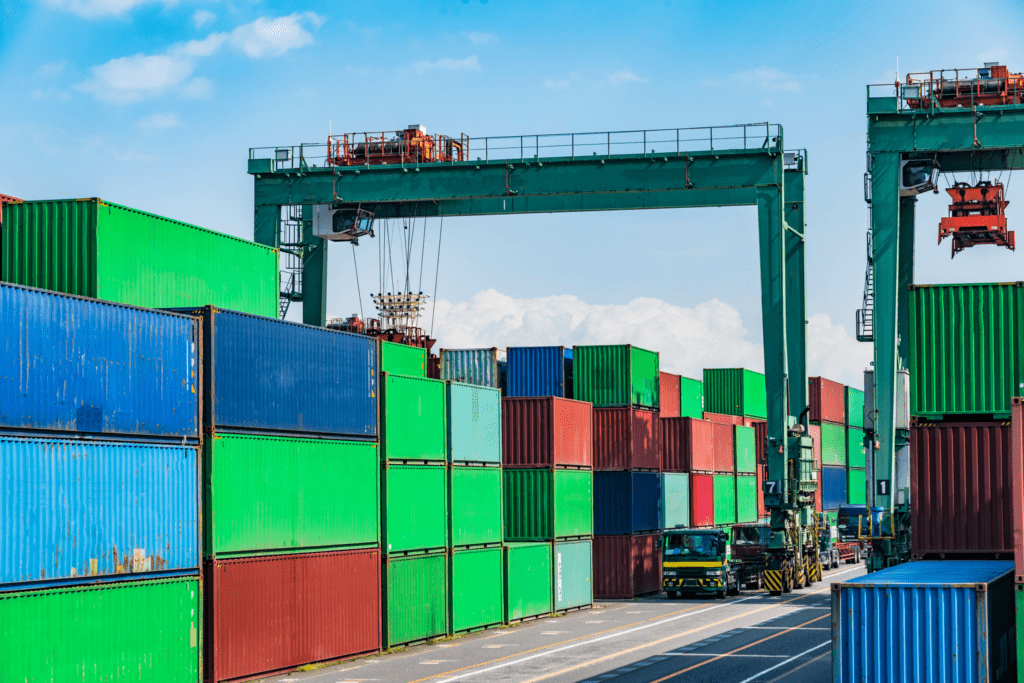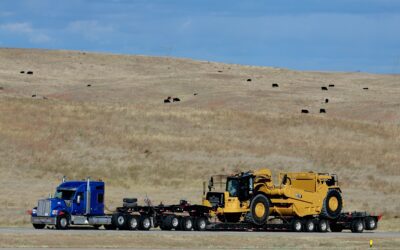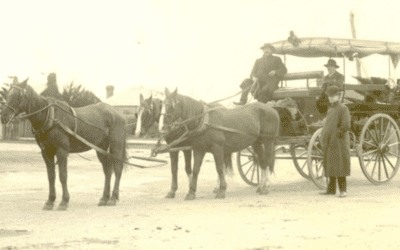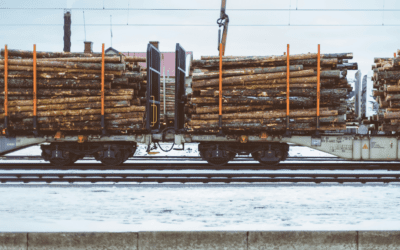UPDATED: 2023, JULY
Drayage is the specialty service of transporting commodities from an ocean port to a destination. It’s usually a short-distance ground transport, and is often referred to as the “first mile.”
For example, if goods come into Long Beach through the port and are scheduled to leave town divided between a dozen trucks and on rail, who transports and manages the goods from the port to the warehouse?
That’s where drayage comes into play.
The first mile is simply the distance between the point of origin and the point of delivery. Even though the first mile is the shortest distance between two points in most cases, it can often be the most difficult to plan.
Article Overview
Why drayage matters
In today’s world, almost every company is operating on an international and domestic scale. Companies need to share their products with customers both cross-country and all over the world. Third-party logistics providers or freight forwarders must handle their supply chains and coordinate with ports, leaning into drayage for support and mobility.
The first mile in the supply chain usually involves complex and strategic coordination between multiple parties with different interests as goods change both modes and locations. If moved by intermodal drayage, the cargo may involve more than one transportation mode before reaching a final delivery point. Port to truck, truck to rail, and rail to warehouse are quite common. Port to truck and truck to port in cross-docking situations pop up frequently, too.

Types of drayage
- Inter-carrier Drayage: From one carrier to another. This could mean a transfer from rail to sea, rail to rail, or sea to rail. Drayage trucks can also deliver cargo to long-haul trucking companies that will take it to its final destination.
- Intra-carrier Drayage: Two locations owned by one carrier. Units can move from a carrier hub to a rail yard, from a port to a yard, or from a port to a carrier hub.
- Door-to-door Drayage: Less common as a final mile option. A truck will carry directly from the transportation hub to the end customer.
- Expedited Drayage: Similar to expedited shipping. When a cargo load has to reach its destination quickly, an expedited drayage truck can haul it there.
- Shuttle Drayage: Movement to temporary storage. Sometimes a dock or other shipping hub will be over capacity with more containers than it can hold, and trucks will move the containers, either empty or full, to a temporary holding place.
- Pier Drayage: Trucking to the port. Pier drayage usually involves transferring goods on a truck from rail to a shipping port.
- Straight Drayage: Inland container haul on a chassis to/from ports/rails to/from shippers/receivers on imports/exports.
As mentioned above, drayage also means transporting cargo to a warehouse, to another port, or delivering to the end destination within a specified radius. A large number of companies can cover a diversity of drayage and specialty services. However, others may select to develop a niche like only rail-to-rail drayage.
It’s important to discover early on which services you’ll need most often based on your book of business.
Drayage rates
As with any other supply chain sector, rates fluctuate based on key economic and industry indicators. Rates are usually comprised of a base fee determined by the weight of the goods and handling fees. The overall rate can also include tolls, driver detention, and equipment costs.
The most common factors for drayage rates include:
- Weight of the shipment
- Type of packaging
- Distance from the origin to destination
- Transportability (equip needed)

2023 and 2024 outlook
Global trade is shaky as of now. According to ING, both trade and shipping have “entered a period of lower growth due to geopolitical concerns, protectionism, and supply chain reconsiderations.” Luckily, experts believe that there will be a small upswing in Q423, as consumer spending during the holiday season can make a dent in the current lull.
As for 2024, there is cautious optimism. While growth is expected to slow or stay where it is currently, this also puts some pressure on domestic shipping. Additionally, “the development of intra-Asian traffic is likely to exceed the global average in 2023 and 2024″
The theme for the end of this year and the upcoming year is Expect the Unexpected & Stick Together. The industry has been resilient in 2022 and in 2023, and it’s expected that if the supply chain is conservative in its actions– if there are hits, they won’t be as detrimental.
The most congested ports of 2023 are:
- Los Angeles
- New York & New Jersey
- Long Beach
- Savannah
- Houston
- Virginia
- Seattle-Tacoma
- Charleston (SC)
- Oakland
- Baltimore
What to expect from drayage coordination
As a shipper, you should determine which type of drayage service is necessary for cargo delivery in the next leg of the journey. The assigned driver may only take the load a few hundred feet to a waiting truck or haul the cargo miles away to a warehousing facility. It’s also important to consider a container may require transfer via drayage services multiple times during a single shipment.
As a carrier, be prepared to switch gears if necessary. Waiting times can often change within minutes, especially at ports. Drayage carriers are at the mercy of the import, and when ocean shipping experiences high traffic, ports become clogged, and delays start to build. Hours can be challenging to plan. Additionally, ports have terminals, and each has its own rules for container pickup, driver processes, appointment booking, and more. While preparing and researching these as a new driver will increase efficiency, experience and time will be the best way to learn how to navigate each portal and the accompanying terminals.
Being available, flexible, and communicative is vital to a successful first-mile experience for all. As a broker or 3PL, you’ll be making more short moves in a smaller time frame (just like the carriers), which means you need to have the right carriers with the right equipment in your network.
If you are looking for reliable drayage services, consider contacting KCH Transportation. With our network of carriers, we ensure a seamless first-mile experience for your freight. Our team understands the importance of having the right carriers with specialized equipment for your needs. Whether you require refrigerated transport, handling hazardous materials, or managing specific load sizes and weights, we have you covered.






